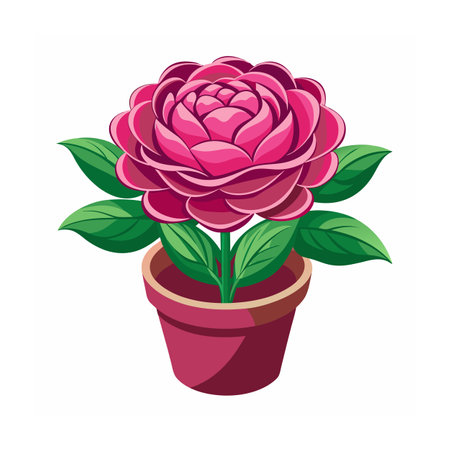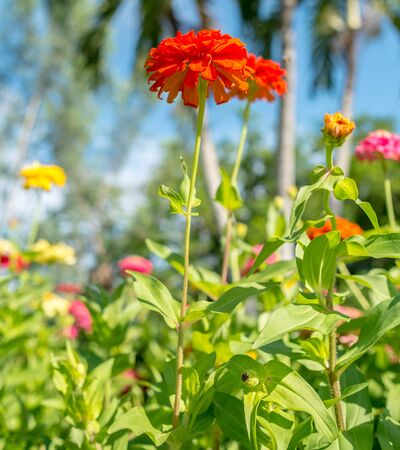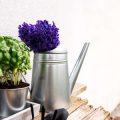1. Understanding the Basics of Color Theory
Creating a stunning flower garden starts with understanding the basics of color theory. Whether youre working with a few flower beds or designing an entire landscape, knowing how colors interact can help you craft a visually pleasing and harmonious garden that pops in every season.
The Color Wheel: Your Garden Design Tool
The color wheel is a simple but powerful tool used by artists and designers—and its just as useful for gardeners. It helps you see how colors relate to one another and makes it easier to choose flower combinations that work well together.
Types of Colors on the Color Wheel
| Color Type | Description | Examples in Flowers |
|---|---|---|
| Primary Colors | These are the base colors that cant be made by mixing others. | Red (roses), Blue (delphiniums), Yellow (daffodils) |
| Secondary Colors | Made by mixing two primary colors. | Orange (marigolds), Green (foliage), Purple (lavender) |
| Tertiary Colors | Created by mixing a primary color with a neighboring secondary color. | Red-orange (zinnias), Blue-green (succulents), Yellow-green (coleus) |
Warm vs. Cool Tones in Your Garden
Colors can also be divided into warm and cool tones, which influence the mood and feel of your garden space.
Understanding Warm and Cool Colors
| Tone Type | Description | Common Flower Colors |
|---|---|---|
| Warm Colors | Create energy and excitement; they tend to stand out. | Red, orange, yellow (sunflowers, poppies, tulips) |
| Cool Colors | Create a calming, soothing atmosphere; often appear more distant. | Blue, purple, green (hydrangeas, irises, hostas) |
Why Color Theory Matters in Garden Design
A strong grasp of color theory helps you build balance and contrast in your garden. Whether you want to create bold statements or soft transitions, using complementary or analogous color schemes based on the wheel can guide your planting choices. For example, pairing purple salvia with yellow coreopsis offers high contrast, while combining bluebells with lavender creates a peaceful palette.
Quick Tip:
If youre ever unsure about what works well together, look at nature—meadows and wildflower fields are full of natural color pairings that follow these same principles!
2. Choosing a Color Scheme That Fits Your Style
When it comes to creating a flower garden that truly feels like your own, selecting the right color scheme is key. Color theory can help you build a garden that reflects your personal style and sets the mood you want—whether that’s calming and serene, bright and cheerful, or bold and dramatic.
Understanding Common Garden Color Schemes
Before choosing your palette, it helps to know the basic types of color schemes. These are based on the color wheel and can guide you in mixing and matching flowers that naturally work well together.
| Color Scheme | Description | Best For |
|---|---|---|
| Complementary | Colors opposite each other on the color wheel (e.g., purple and yellow) | High contrast, vibrant gardens |
| Monochromatic | Different shades and tints of one color (e.g., light pink to deep rose) | Elegant, soothing garden designs |
| Analogous | Colors next to each other on the color wheel (e.g., red, orange, and yellow) | Warm, harmonious feel |
Match Colors to Your Personal Style
Your garden should be a reflection of your personality. Think about how you want to feel when youre spending time outdoors. If you enjoy bold fashion or modern design, a complementary scheme with high contrast might suit you. Prefer a peaceful retreat? A monochromatic blue or lavender garden may be perfect. If youre drawn to cozy spaces and natural tones, an analogous palette with warm hues like red, orange, and gold could be ideal.
Tips for Getting Started:
- Choose one main color as your base.
- Add supporting colors based on your chosen scheme.
- Consider bloom times so colors appear throughout the season.
- Use foliage as a neutral backdrop to make colors pop.
No matter which scheme you choose, the most important thing is that it feels right to you. Let your instincts guide you, and dont be afraid to experiment as your garden grows.

3. Seasonal Considerations for Color Planning
Creating a stunning flower garden isnt just about picking your favorite colors—its also about knowing when each plant will bloom. By planning for seasonal color, you can enjoy a vibrant garden from early spring through late fall. The key is to mix plants that peak during different times of the year so theres always something blooming.
Why Seasonal Planning Matters
If all your flowers bloom in spring, your garden could look dull by mid-summer. A well-planned garden considers the bloom time of each plant and spreads color throughout the seasons. This approach not only keeps your landscape interesting but also supports pollinators like bees and butterflies longer into the year.
Color Planning by Season
Here’s a simple guide to help you choose plants that shine in each season:
| Season | Color Focus | Suggested Plants |
|---|---|---|
| Spring | Pastels and bright fresh hues | Tulips, Daffodils, Hyacinths, Bleeding Hearts |
| Summer | Bold and saturated colors | Daylilies, Coneflowers, Black-eyed Susans, Zinnias |
| Fall | Warm tones like orange, red, and gold | Mums, Asters, Sedum, Ornamental Grasses |
Tips for Continuous Blooming Color
- Layer Your Planting: Combine early, mid, and late bloomers within each season to extend color.
- Use Foliage: Don’t forget plants with colorful leaves like coleus or heuchera—they provide interest even when flowers fade.
- Add Annuals: Fill gaps between perennial blooms with annuals like petunias or marigolds for extra pops of color.
- Think Ahead: Use gardening calendars or apps to track bloom times and avoid overlapping too much in one part of the season.
A little seasonal strategy goes a long way in keeping your garden full of life and color all year round.
4. Using Color to Create Garden Impact
Color isnt just about beauty—its a powerful tool that can shape how your flower garden looks and feels. By understanding how to use bold and subtle color contrasts, you can guide the eye, highlight special features, and give your garden more visual depth. Whether youre working with a small front yard or a large backyard space, using color thoughtfully helps create a garden thats both eye-catching and inviting.
Bold vs. Subtle Color Contrasts
Color contrast plays a big role in how dynamic your garden appears. Bold contrasts can make certain areas pop, while subtle combinations create a soothing and blended look. Heres a quick comparison:
| Type of Contrast | Description | Best Used For |
|---|---|---|
| Bold Contrast | Combining colors opposite on the color wheel (like purple and yellow) | Creating focal points, drawing attention to specific areas |
| Subtle Contrast | Using similar or neighboring colors (like pinks and purples) | Creating harmony, soft transitions, and relaxing spaces |
Create Focal Points with Color
You can use bold color combinations to draw attention to key parts of your garden—like a bench, fountain, or entryway. Try placing bright red tulips near a garden path or grouping golden marigolds around a statue. These vivid choices naturally pull the eye toward them.
Tips for Creating Focal Points:
- Select one dominant color and surround it with contrasting tones.
- Place bold-colored flowers near high-traffic areas to maximize impact.
- Use containers or raised beds to isolate focal-point plantings.
Add Depth with Layered Color
If your flower bed feels flat, layering colors from front to back can help add dimension. Use lighter shades in front and darker tones behind them to create an illusion of depth—especially helpful in narrow borders or small yards.
Layering Example:
- Front row: Soft pink alyssum or white petunias
- Middle row: Lavender salvia or mid-tone coneflowers
- Back row: Deep blue delphiniums or rich burgundy hollyhocks
This gradual shift in color intensity makes your garden feel fuller and more visually interesting.
Mood & Seasonality Matter Too
Your choice of colors also sets the mood. Warm colors like red, orange, and yellow bring energy and excitement; cool tones like blue, lavender, and green promote calmness. Think about what feeling you want your garden to evoke—and remember that some colors shine better in different seasons. Pastels are great for spring, while rich jewel tones stand out in late summer and fall.
The right use of color contrast will not only beautify your landscape but also give it structure and personality. With a little planning and creativity, your flower garden can become a living canvas full of life and meaning.
5. Color Harmony with Native and Pollinator-Friendly Plants
Designing a vibrant flower garden isnt just about choosing pretty colors—its also about supporting local ecosystems. By blending color theory with native and pollinator-friendly plants, you can create a garden that’s both beautiful and beneficial to wildlife like bees, butterflies, and hummingbirds.
Why Native and Pollinator-Friendly Plants Matter
Native plants are adapted to your region’s climate and soil, making them easier to care for and more resilient. They also provide essential food and shelter for local pollinators. When you match these plants with color theory principles, you get a garden that pops with personality while promoting biodiversity.
Using Color Theory in Your Plant Selection
Start by thinking about the color wheel. Complementary colors (like purple and yellow) create strong contrast, while analogous colors (like red, orange, and yellow) offer a soothing effect. Use these combinations with native flowers to achieve harmony in both color and function.
Color Combinations Using Native Plants
| Color Scheme | Example Plants | Pollinator Benefit |
|---|---|---|
| Complementary (Purple & Yellow) | Purple Coneflower (Echinacea purpurea) + Black-eyed Susan (Rudbeckia hirta) | Attracts bees and butterflies |
| Analogous (Red, Orange, Yellow) | Bee Balm (Monarda didyma) + Butterfly Weed (Asclepias tuberosa) + Coreopsis | Nectar-rich blooms for hummingbirds and butterflies |
| Monochromatic (Various shades of Blue) | Blue Mistflower (Conoclinium coelestinum) + Great Blue Lobelia (Lobelia siphilitica) | Loved by native bees |
Tips for Designing Your Garden
- Group by Color: Create visual impact by planting in clusters of the same or harmonizing colors.
- Diversify Bloom Times: Choose plants that bloom at different times to keep color—and food for pollinators—available all season long.
- Add Texture: Mix leaf shapes and plant heights to make your color palette even more dynamic.
- Avoid Pesticides: Go chemical-free to protect the very pollinators your plants are attracting.
Finding the Right Plants for Your Region
The best way to choose native plants is by referencing your USDA Hardiness Zone and consulting local extension offices or native plant societies. Here are some examples by region:
| Region | Native Pollinator-Friendly Plants |
|---|---|
| Northeast | Anise Hyssop, Wild Bergamot, New England Aster |
| Southeast | Purple Passionflower, Coral Honeysuckle, Blazing Star |
| Midwest | Culvers Root, Prairie Dropseed, Butterfly Milkweed |
| Southwest | Pineleaf Penstemon, Desert Marigold, Chocolate Flower |
| Pacific Northwest | Nodding Onion, Oregon Iris, Red Columbine |
| California Coast | Cleveland Sage, California Poppy, Monkeyflower |
Merging color theory with eco-conscious choices doesn’t have to be complicated. With thoughtful planning and a little creativity, your American garden can be a colorful haven for both people and pollinators.


